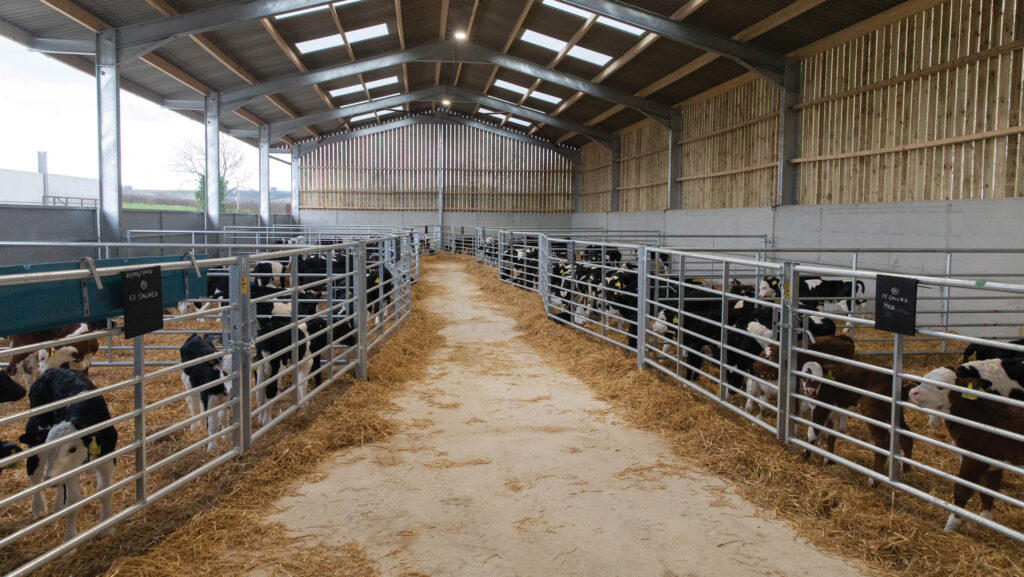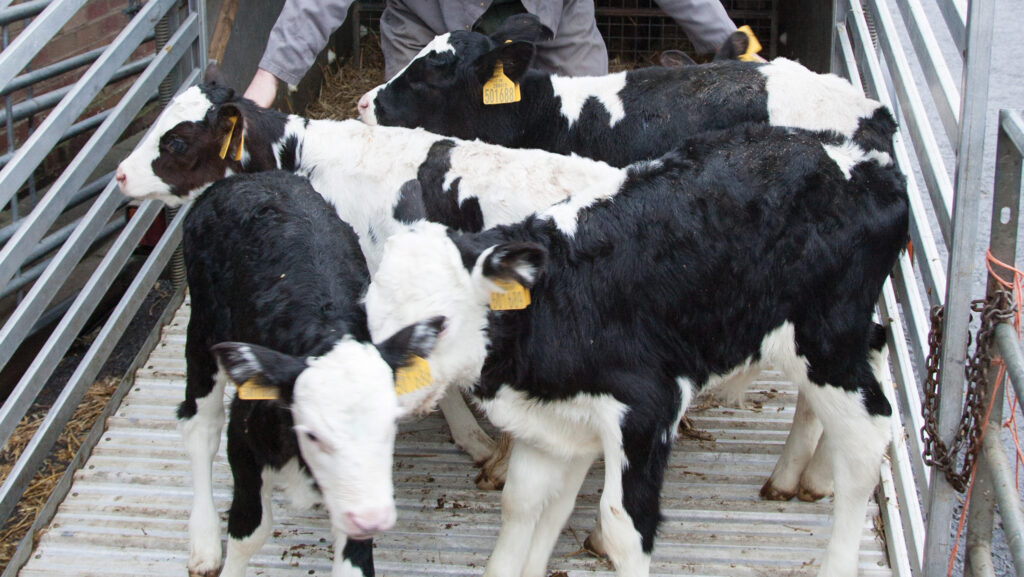GB Calf Strategy to focus on unweaned dairy beef calf welfare
 © Tim Scrivener
© Tim Scrivener Dairy beef is no longer seen as a by-product of the milk industry, but a suitable co-product to replace beef imports, as a result of the GB Calf Strategy’s work.
But while celebrating this success, AHDB lead veterinary expert Sarah Tomlinson is in no doubt that there are still some tough areas to tackle.
One is the unintended consequence of more unweaned dairy beef calves potentially being sold at market and subject to long transport times.
See also: How to group calves for successful social rearing
She realises it could become another industry reputational risk for public scrutiny – particularly when some European countries are introducing calf travelling restrictions after lobbying from animal welfare groups.
In 2023, Germany, for instance, banned transport of calves under 28 days and restricted journey times to eight hours.
The strategy’s working groups (see “GB Calf Strategy 2025-2030”) will now look at how to get calves off dairy farms and into the supply chain in a way that is better for their welfare, the industry’s reputation and the environment.
“A calf has a purpose beyond being born, so dairy farmers need to consider the end result of the beef calf, too – even if it leaves the farm at two weeks,” said Sarah.
GB Calf Strategy 2025-2030
The 2025-2030 strategy will address issues by focusing on three themes:
- Breeding the Right Calf fit for purpose from the start, either as a dairy replacement or for beef
- Ensuring all calves receive the Right Start with evidence-based rearing management
- Giving every calf access to the Right Route to market, whether that is through an integrated scheme, direct sale or an auction market.
Since 2014, dairy beef calf registrations have risen by 74%. In 2024, dairy beef made up 37% of prime age cattle slaughtered.
Source: Ruminant Health & Welfare
Fair and sustainable supply chain
A fair calf supply chain is needed, where everyone is profitable and shares data – from medicines and on-farm health, to carcass data and KPIs.
Sarah said this required a route for every dairy farmer to market, whether they ran a small dairy herd, a spring block-calving one, or had small cows – they needed a suitable outlet for their dairy beef calves.
“To thrive, the supply chain must be environmentally and financially sustainable, supporting local rearers and slaughterhouses.
“Our industry is set up with a lot of milk producers in the South West and West Midlands, with calves going into the North and East for rearing and finishing.”
Sarah also raised the idea of rewarding dairy farmers financially for best practice in the calf’s first 12 weeks of life.
Historically, the calf entering the beef supply chain was seen as a low-value animal and treated differently to a heifer intended for the dairy herd.
Yet Sarah said the strategy’s aim of “rearing all calves with care and purpose” meant every calf should be treated the same, regardless of its destination.
Beef calves also needed sufficient good-quality colostrum and good-quality milk replacer, with clean, warm, dry housing, she pointed out.
But “doing the right thing” for a calf should not be down to farmer conscience or excellent stockmanship from a few, she stressed.
“The first 12 weeks have a massive impact on eventual KPIs for a calf.
“Farmers need to be rewarded for making those breeding or management decisions to make it worth their while; they have businesses to run, budgets, and bills to pay.”
Transport stress
A key concern is that milk-fed calves easily suffer transport stress because they have not yet developed their own immune system.
They struggle to eat hard feed, drink water and regulate their body temperature.
Sarah pointed out that vaccinations could only be started at a minimum age, so a calf could be sold off farm before this is possible.
“We don’t know why calves are going off farm before six weeks of age, it may be just because the farmer doesn’t want to rear beef calves.

© Tim Scrivener
But once they have to pay for a TB test, it adds more cost. It would help if the TB pre-moving test age were raised from 42 to 90 days.
There would be more scope to rear, wean, vaccinate and transport a solid, more robust calf for a beef finisher,” she said.
“A lot of dairy farmers are constantly under threat of TB movement restrictions.
“If we get the TB asks [in the strategy] right, then calves might not need to travel.
“There could be local opportunities for new starters to rear these calves.”
GB livestock transportation
- Livestock must be fit for the intended journey
- Newborns with unhealed navels should not travel
- Calves under 10 days of age must not be transported more than 100km unless accompanied by their dam
- Calves 11-14 days of age must not be transported more than eight hours unless accompanied by their dam
Source: Red Tractor Standards
Sarah Tomlinson was speaking at UK Dairy Day, Telford, Shropshire
